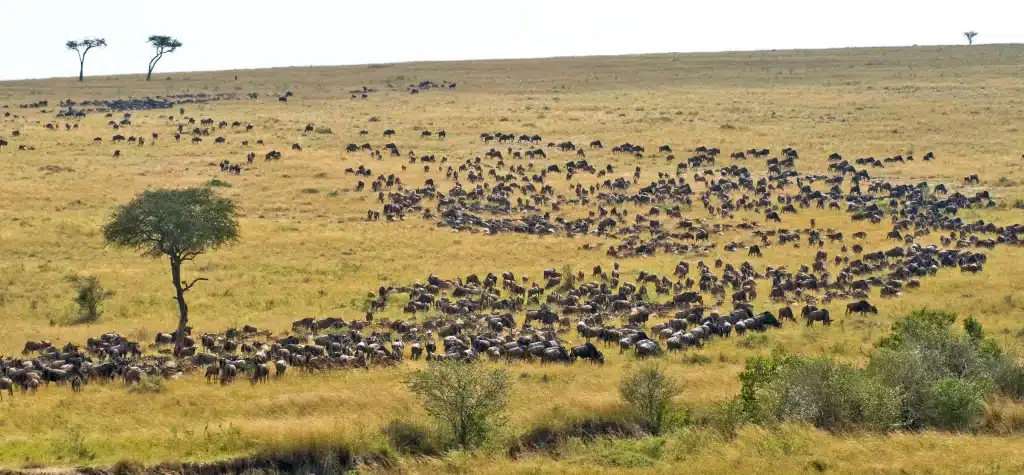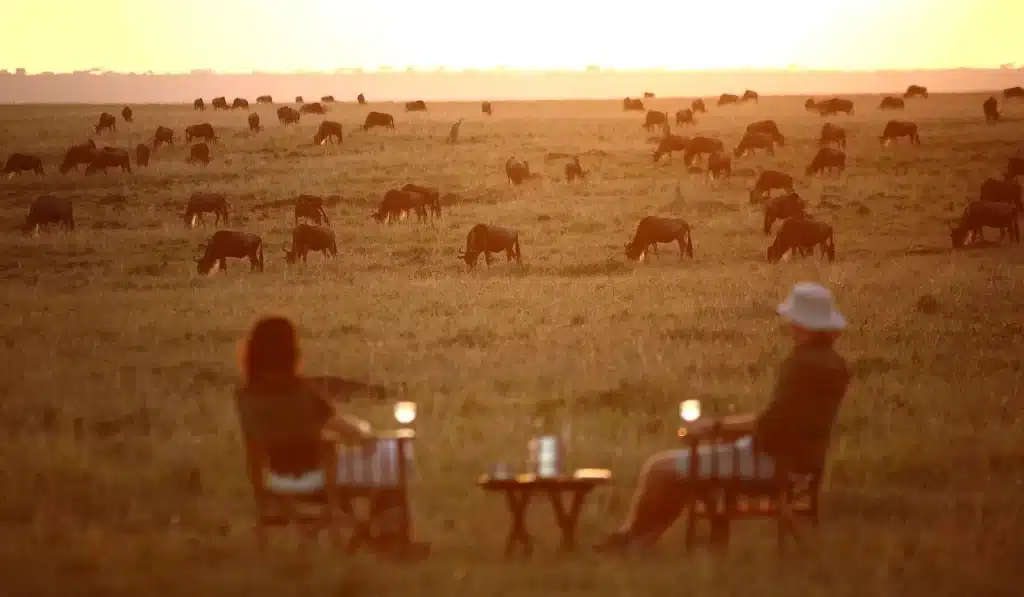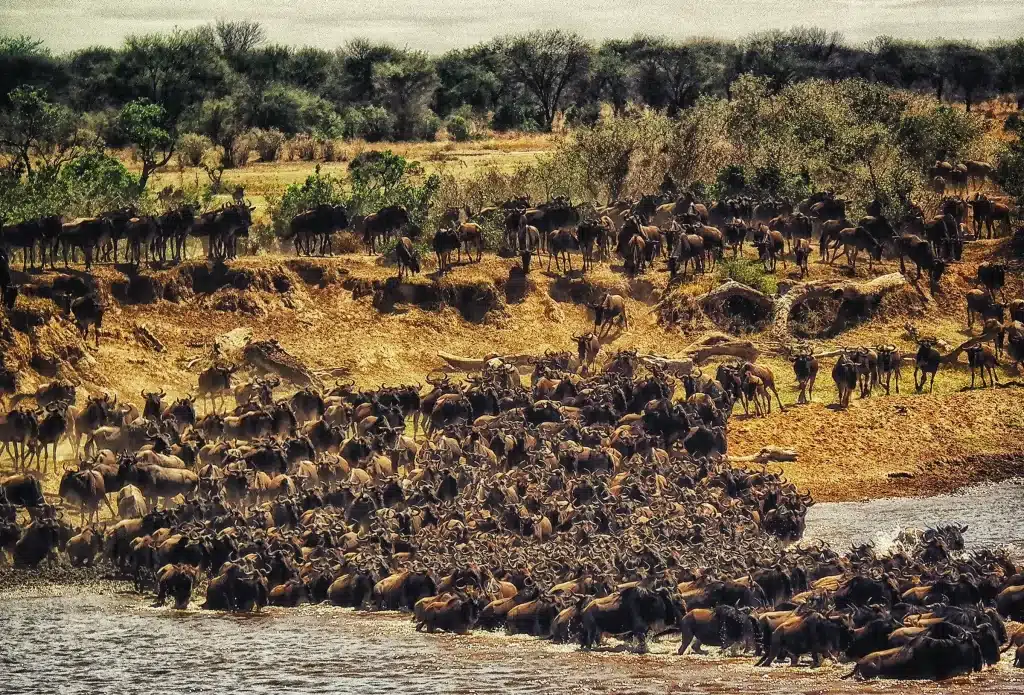Great Wildebeest Migration
The Ultimate Guide to the Great Wildebeest Migration (2025 Edition)
Introduction
The Great Wildebeest Migration is one of the most extraordinary wildlife spectacles on Earth. Each year, over 1.5 million wildebeest, accompanied by hundreds of thousands of zebras and gazelles, traverse the Serengeti-Mara ecosystem in a continuous cycle driven by the search for fresh grazing and water. This guide provides an in-depth look at the migration’s timeline, key locations, and essential tips for witnessing this natural phenomenon.
Migration Calendar: Month-by-Month Breakdown
January – March: Calving Season in Southern Serengeti
During these months, the herds congregate in the southern Serengeti and Ndutu plains. February marks the peak of the calving season, with approximately 8,000 wildebeest calves born daily. The abundance of vulnerable young attracts predators, offering dramatic wildlife interactions.
April – May: Movement Towards Central and Western Serengeti
As the rains begin, the herds start moving northwest towards the central Serengeti, including areas like Seronera and Moru Kopjes. This period sees the formation of large columns of wildebeest, zebras, and gazelles moving together.
June – July: Grumeti River Crossings
The herds reach the Grumeti River in the western corridor of the Serengeti. Crossing this crocodile-infested river is perilous and offers thrilling viewing opportunities. The Grumeti River crossings are less predictable but equally dramatic.
August – September: Mara River Crossings into Maasai Mara
This period is characterized by the most dramatic river crossings at the Mara River, as the herds move into Kenya’s Maasai Mara National Reserve. The crossings are fraught with danger from strong currents and lurking crocodiles, providing unparalleled wildlife spectacles.
October – November: Southward Return to Serengeti
After grazing in the Maasai Mara, the herds begin their journey back south to the Serengeti. This movement is influenced by the onset of the short rains in Tanzania, prompting the search for fresh pastures.
December: Arrival in Southern Serengeti
By December, the herds have returned to the southern Serengeti plains, completing the annual migration cycle. The landscape is lush from the rains, setting the stage for the upcoming calving season.

Key Locations to Witness the Migration
Southern Serengeti and Ndutu Plains
Ideal for observing the calving season from January to March. The area offers open plains that make wildlife viewing accessible.
Central Serengeti (Seronera)
A prime location during April and May as the herds move northward. The Seronera River provides essential water sources, attracting diverse wildlife.
Western Corridor and Grumeti River
Best visited in June and July to witness the challenging Grumeti River crossings. The area is less crowded, offering a more secluded experience.
Northern Serengeti and Mara River
From August to September, this region is the focal point for the dramatic Mara River crossings. Lodges near Kogatende provide strategic access to crossing points.
Maasai Mara National Reserve
In Kenya, the Maasai Mara offers excellent viewing from August to October. The reserve’s open landscapes and abundant wildlife make it a premier safari destination.
Wildlife Highlights
- Predators: Lions, cheetahs, leopards, hyenas, and crocodiles are prevalent, especially near river crossings and calving grounds.
- Birdlife: Vultures, eagles, and storks are commonly seen, particularly during the calving season and river crossings.
- Other Herbivores: Zebras and gazelles accompany the wildebeest, adding to the diversity of the migration.
Tips for Planning Your Safari
- Timing: Align your visit with specific migration events, such as calving or river crossings, based on the month-by-month breakdown.
- Accommodation: Book lodges or camps that are strategically located near migration routes and river crossings for optimal viewing.
- Guides: Engage experienced safari guides who can provide insights and increase the chances of witnessing key migration moments.
- Equipment: Bring quality binoculars and cameras with zoom lenses to capture distant wildlife action.
- Health Precautions: Consult with travel health professionals regarding vaccinations and medications needed for travel to East Africa.
Conclusion
The Great Wildebeest Migration is a dynamic and awe-inspiring event that offers unique wildlife viewing opportunities throughout the year. By understanding the migration’s patterns and planning accordingly, you can witness one of nature’s most remarkable phenomena.







